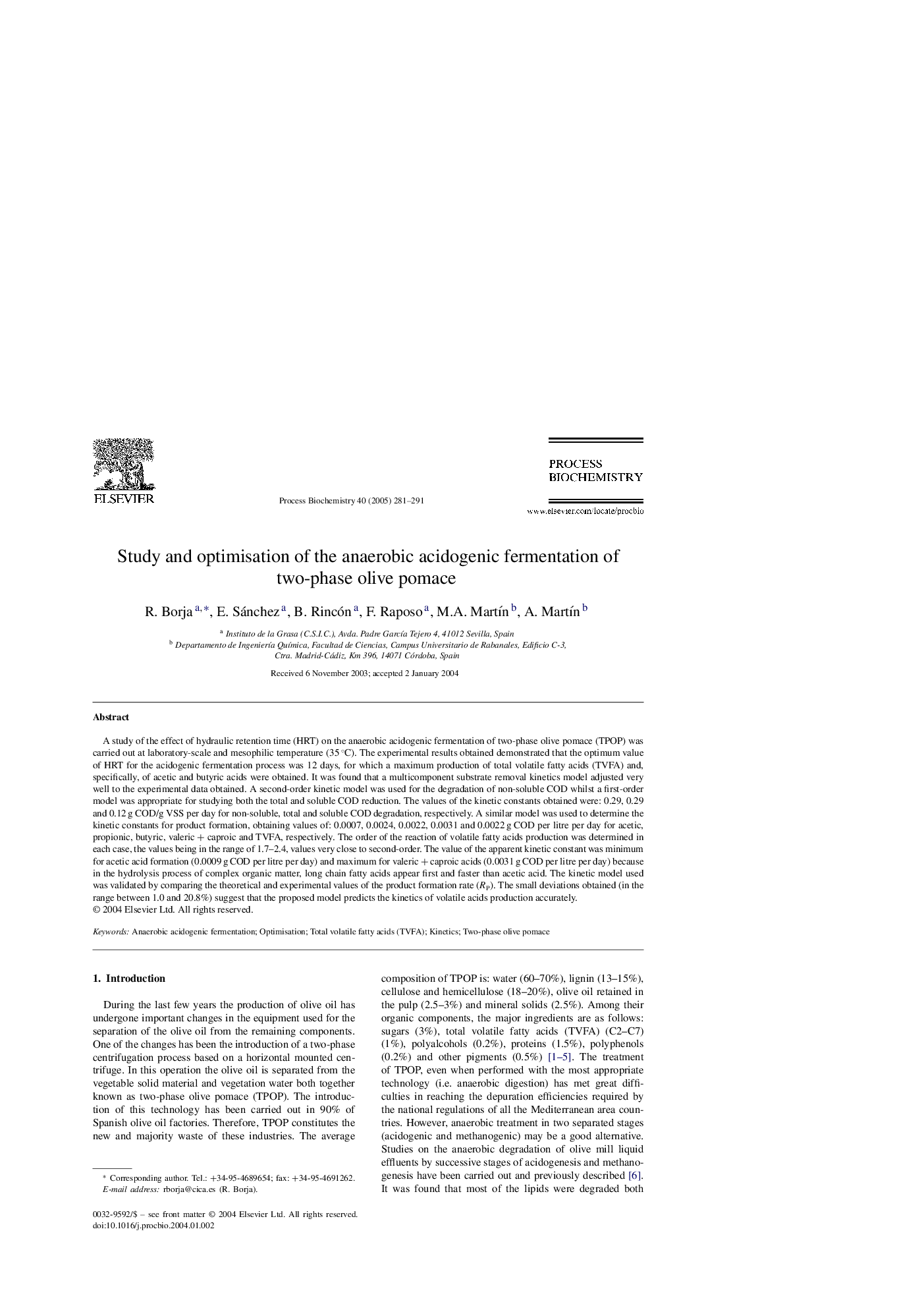| کد مقاله | کد نشریه | سال انتشار | مقاله انگلیسی | نسخه تمام متن |
|---|---|---|---|---|
| 10236191 | 45140 | 2005 | 11 صفحه PDF | دانلود رایگان |
عنوان انگلیسی مقاله ISI
Study and optimisation of the anaerobic acidogenic fermentation of two-phase olive pomace
دانلود مقاله + سفارش ترجمه
دانلود مقاله ISI انگلیسی
رایگان برای ایرانیان
موضوعات مرتبط
مهندسی و علوم پایه
مهندسی شیمی
بیو مهندسی (مهندسی زیستی)
پیش نمایش صفحه اول مقاله

چکیده انگلیسی
A study of the effect of hydraulic retention time (HRT) on the anaerobic acidogenic fermentation of two-phase olive pomace (TPOP) was carried out at laboratory-scale and mesophilic temperature (35 °C). The experimental results obtained demonstrated that the optimum value of HRT for the acidogenic fermentation process was 12 days, for which a maximum production of total volatile fatty acids (TVFA) and, specifically, of acetic and butyric acids were obtained. It was found that a multicomponent substrate removal kinetics model adjusted very well to the experimental data obtained. A second-order kinetic model was used for the degradation of non-soluble COD whilst a first-order model was appropriate for studying both the total and soluble COD reduction. The values of the kinetic constants obtained were: 0.29, 0.29 and 0.12 g COD/g VSS per day for non-soluble, total and soluble COD degradation, respectively. A similar model was used to determine the kinetic constants for product formation, obtaining values of: 0.0007, 0.0024, 0.0022, 0.0031 and 0.0022 g COD per litre per day for acetic, propionic, butyric, valeric+caproic and TVFA, respectively. The order of the reaction of volatile fatty acids production was determined in each case, the values being in the range of 1.7-2.4, values very close to second-order. The value of the apparent kinetic constant was minimum for acetic acid formation (0.0009 g COD per litre per day) and maximum for valeric+caproic acids (0.0031 g COD per litre per day) because in the hydrolysis process of complex organic matter, long chain fatty acids appear first and faster than acetic acid. The kinetic model used was validated by comparing the theoretical and experimental values of the product formation rate (RP). The small deviations obtained (in the range between 1.0 and 20.8%) suggest that the proposed model predicts the kinetics of volatile acids production accurately.
ناشر
Database: Elsevier - ScienceDirect (ساینس دایرکت)
Journal: Process Biochemistry - Volume 40, Issue 1, January 2005, Pages 281-291
Journal: Process Biochemistry - Volume 40, Issue 1, January 2005, Pages 281-291
نویسندگان
R. Borja, E. Sánchez, B. Rincón, F. Raposo, M.A. MartıÌn, A. MartıÌn,